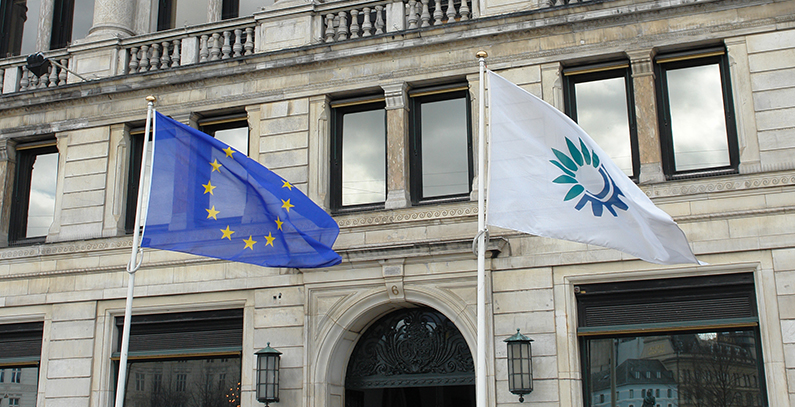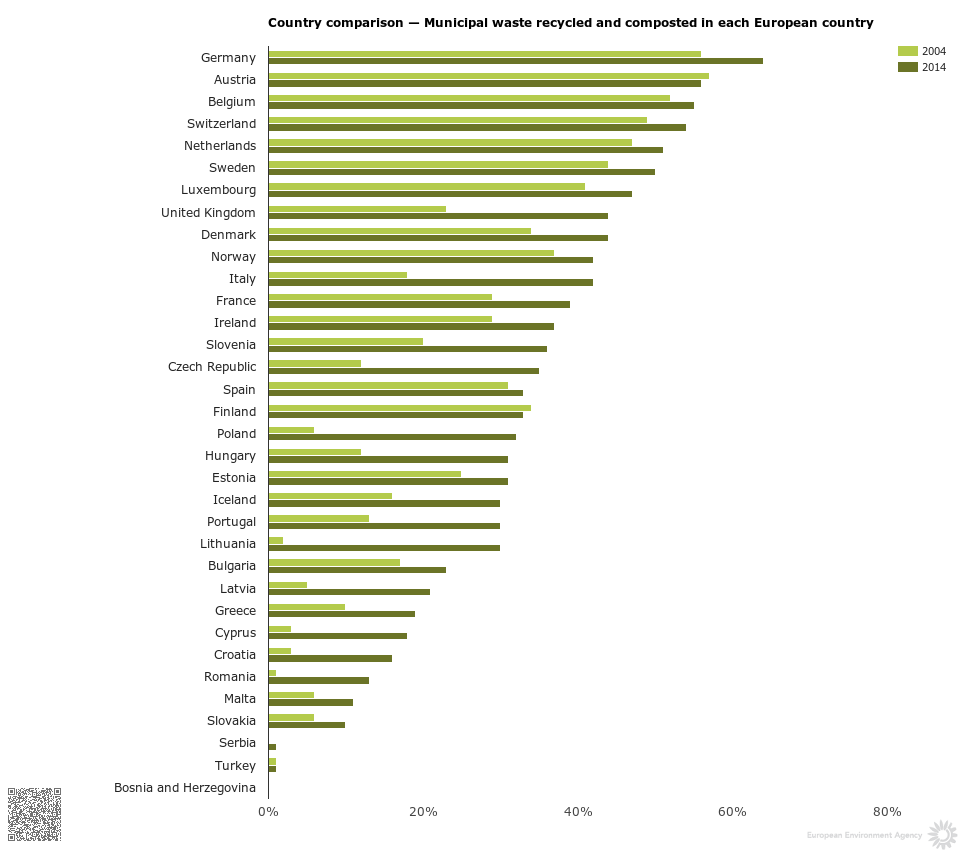
Photo: EEA
Share
Share
European Union member states recycled 44 percent of municipal solid waste in 2014, bringing them closer to the target of 50 percent by 2020, as set by the EU Waste Framework Directive.
The 33 members of the European Environmental Agency (EEA), including Serbia, recycled 34 percent in the same year. The amount of recycled waste in EEA member countries rose 10 percent between 2004. and 2014, while in EU the growth was 13 percent in the same time period.
The seventh EU Environment Action Programme states that, by 2020, waste should be safely managed as a resource, landfilling limited to residual (i.e. non-recyclable and non-recoverable waste) and energy recovery limited to non-recyclable materials.
The amount of municipal waste being recycled has been steadily increasing in Europe, thanks to investments in appropriate collection and handling, financial incentives to move away from landfilling of waste and landfill bans. At the same time, there are large differences between countries with the highest and lowest recycling rates, according to EEA study.

Among the Balkan countries, the worst results in 2014. were achieved by Bosnia and Herzegovina, which recycled no municipal waste, Serbia and Turkey with one percent each. Ahead of them are Romania (13%), Croatia (16%), Cyprus (18%), Greece (19%) and Bulgaria (23%). Slovenia took the first place with 36 percent of municipal waste recycled.
In the meantime the share of recycled municipal waste in Serbia increased. Currently the percentage is around five percent, according to latest data obtained by BGEN from the Ministry of Agriculture and Environmental Protection. Serbia’s goal is to reach the 50 percent target by 2030.
Germany, Austria, Belgium, Switzerland, the Netherlands and Sweden recycled at least half of their municipal waste in 2014. Overall, in 15 out of 32 countries, the increase in recycling rates was at least 10 percentage points over the period 2004-2014. However, in seven countries the proportion of recycled municipal waste barely changed (Spain, Belgium, Latvia, the Netherlands, Slovakia, Malta and Switzerland) and in three countries (Finland, Austria and Turkey) it decreased.
The EEA study established a clear link between increasing recycling rates and declining rates of landfilling. In countries with high municipal waste recycling rates, landfilling is declining much faster than recycling is growing, as waste management strategies usually move from landfilling towards a combination of recycling and incineration, and in some cases also mechanical-biological treatment.
Finally, the study cites the European Commission’s Circular Economy Package, which contains proposed targets for the EU beyond 2020. Among them is the recycling of 65 percent of municipal and 75 percent of packaging waste by 2030, as well as a binding target to reduce landfill to a maximum of 10 percent of municipal waste by 2030.









Be the first one to comment on this article.